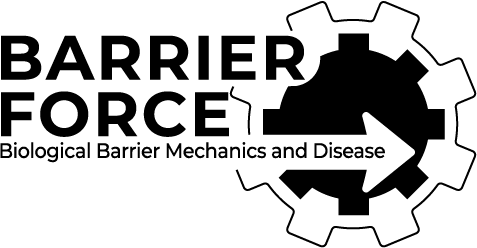Publications
Highlighted publications from CoE
-
PP2A methylesterase PME-1 suppresses anoikis and is associated with therapy relapse of PTEN-deficient prostate cancers
While organ-confined prostate cancer (PCa) is mostly therapeutically manageable, metastatic progression of PCa remains an unmet clinical challenge. Resistance to anoikis, a form of cell death initiated by cell detachment from the surrounding extracellular matrix, is one of the cellular processes critical for PCa progression towards aggressive disease. Therefore, further understanding of anoikis regulation in…
-
Contribution of VEGF-B-Induced Endocardial Endothelial Cell Lineage in Physiological Versus Pathological Cardiac Hypertrophy
Background: Preclinical studies have shown the therapeutic potential of VEGF-B (vascular endothelial growth factor B) in revascularization of the ischemic myocardium, but the associated cardiac hypertrophy and adverse side effects remain a concern. To understand the importance of endothelial proliferation and migration for the beneficial versus adverse effects of VEGF-B in the heart, we explored…
-
Revealing the key structural features promoting the helical conformation in algal polysaccharide carrageenan in solution
Carrageenans are industrially important polysaccharides with tunable viscoelastic and gelation properties. The function of polysaccharide depends on its conformation and chemical composition. However, the solution conformations of carrageenans are highly debated, and the structure-function relationship remains elusive. Here, we have studied the intrinsic conformational behavior of a series of carrageenan hexamers in solution, using extensive…
-
Insights into short chain polyethylene penetration of phospholipid bilayers via atomistic molecular dynamics simulations
The escalation of global plastic production, reaching an annual output of 400 million tons, has significantly intensified concerns regarding plastic waste management. This has been exacerbated by improper recycling and disposal practices, contributing to the impending crisis of plastic pollution. Predictions indicate that by 2025, the environment will bear the burden of over ten billion…
-
Comparison of trastuzumab emtansine, trastuzumab deruxtecan, and disitamab vedotin in a multiresistant HER2-positive breast cancer lung metastasis model
Human epidermal growth factor 2 (HER2)-positive breast cancer with lung metastases resistant to targeted agents is a common therapeutic challenge. Absence of preclinical lung metastasis models that are resistant to multiple anti-HER2 targeted drugs hampers the development of novel therapies. We established a novel HER2-positive breast cancer cell line (L-JIMT-1) with a high propensity to…
-
Novel tools to study cell-ECM interactions, cell adhesion dynamics and migration
Integrin-mediated cell adhesion is essential for cell migration, mechanotransduction and tissue integrity. In vivo, these processes are regulated by complex physicochemical signals from the extracellular matrix (ECM). These nuanced cues, including molecular composition, rigidity and topology, call for sophisticated systems to faithfully explore cell behaviour. Here, we discuss recent methodological advances in cell-ECM adhesion research…
-
Positive and negative durotaxis – mechanisms and emerging concepts
Cell migration is controlled by the coordinated action of cell adhesion, cytoskeletal dynamics, contractility and cell extrinsic cues. Integrins are the main adhesion receptors to ligands of the extracellular matrix (ECM), linking the actin cytoskeleton to the ECM and enabling cells to sense matrix rigidity and mount a directional cell migration response to stiffness gradients.…
-
Mechanical state transitions in the regulation of tissue form and function
From embryonic development, postnatal growth and adult homeostasis to reparative and disease states, cells and tissues undergo constant changes in genome activity, cell fate, proliferation, movement, metabolism and growth. Importantly, these biological state transitions are coupled to changes in the mechanical and material properties of cells and tissues, termed mechanical state transitions. These mechanical states…
-
Regulation of YAP Promotor Accessibility in Endothelial Mechanotransduction
Background: Endothelial cells are constantly exposed to mechanical forces in the form of fluid shear stress, extracellular stiffness, and cyclic strain. The mechanoresponsive activity of YAP (Yes-associated protein) and its role in vascular development are well described; however, whether changes to transcription or epigenetic regulation of YAP are involved in these processes remains unanswered. Furthermore,…
